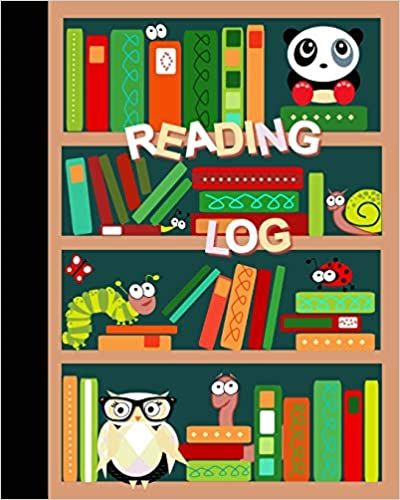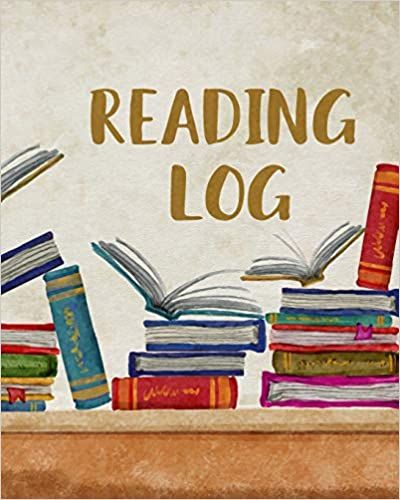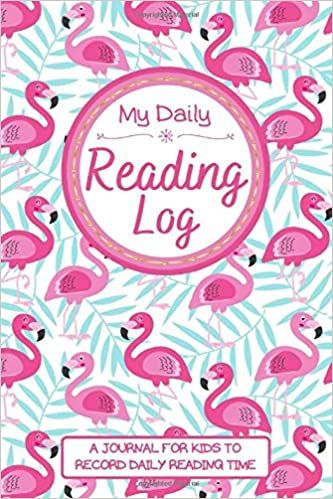This post contains affiliate links. When you buy through these links, Book Riot may earn a commission.
There are lots of reasons you might be looking for a reading log for kids. Maybe you want to encourage your child to read more. Perhaps your child really enjoys keeping track of their progress and the reading log is almost like marking their height on the wall. Most likely, however, you or your child’s teacher want to hold your child accountable for reading.
Bear with me for a minute, because I want to unpack that a bit. First, know that I have lots of thoughts about reading. I’m a former elementary school teacher and former literacy consultant for the Kentucky Department of Education. I have a PhD in curriculum & instruction, with a focus on literacy. I’m a literacy professor currently, and I teach people to teach kids to read for a living.
Now that you know I’m not just your great aunt raving on Facebook, let’s talk about the reading log. I, like many teachers, have a complicated relationship with reading logs. Parents and teachers want kids to read and the reading log seems like a good way to make sure that’s happening. Unfortunately, many adults don’t realize that reading logs for kids often do more harm than good.
What’s the Problem With Reading Logs for Kids?
Good readers read a lot. It makes sense, then, that having kids log their reading is a fine way to get them to read more. However, research shows that this isn’t what really happens. Often, reading logs have the opposite effect. They make kids want to read less.
Why? Several reasons. First, extrinsic motivation is a fickle thing. If rewards or grades are linked to the reading log, that might be motivating…for awhile. It’s unlikely, though, that kids will want to read beyond what is required for the reward or after the rewards stop. Additionally, with extrinsic rewards at stake, kids are likely to fake it if they can. (That means being dishonest on their reading logs. I won’t rant today, but this also applies to Accelerated Reader. Barf.)
Second, reading logs can make reading feel like a chore. Kids who enjoy reading will read more and read better over time. When we make reading a task, or worse a punishment, we destroy kids’ motivation to do it. We should be trying to make reading a joyful activity.
Lastly, you, the teacher, and the kids all know that the log is about accountability, not building a lasting love of reading. It won’t take kids long to start separating “fun reading” from “school reading.” Even worse, they learn that reading is not a thing they do for pleasure, but for adults’ satisfaction. Trust me, there are other ways to hold kids accountable for reading. Consider these alternatives to reading logs.
Check out these 11 Great Reading Comprehension Apps for Kids and these Best Reading Apps for Kids as you look for more ways to support your kids’ literacy.
Still Determined to Use Reading Logs?
Fine. There are people out there who stand by the reading log and, since I’m writing this post, I am not condoning them outright. Before I share some, though, I’m going to make you promise to do (or at least read) the following three things:
- Give kids lots of choice. If they’re logging their reading, let them read what they want to read! Let them read books that are too hard or too easy, as well as books that are just right. Allow them to listen to audiobooks, to read out loud to someone, and to be read to. Don’t ever disparage their choices: reading magazines, graphic novels, online articles, picture books—it doesn’t matter. It’s all valid reading and is teaching them to navigate different types of texts.
- Make it fun. Make going to the library to choose books a fun event. Create a cozy and desirable nook for reading. Read for pleasure yourself so that they see good models. Talk to them about their reading, and not in a “quiz” way; just talk to them like you would to a friend about a good book.
- Allow them wiggle room. Whenever you can, respect them as a reader. If they start a book and hate it, don’t force them to keep reading. There will be times where they just don’t feel like reading. Let that happen. Sometimes they’ll want to read the same book again and again. Let them!
Free Reading Logs for Kids
Reading logs can vary in their level of detail and other elements. If you are considering a log for younger children, keep it simple. Look for logs that include a place for the title and author, maybe number of pages, and an easy rating system. As kids grow older, you might look for logs that ask for summaries, include graphic organizers, or ask kids to write a review.
Now to the links to reading logs. I can hear you saying “finally!” and I don’t blame you. Hopefully you found the previous information helpful. Now what you came for: some reading logs for kids.
- ReadWriteThink.org is a pretty reliable website for literacy info. They have a few free reading log printable like this and this.
- With a free account on Teachers Pay Teachers, you can access lots of free templates created by teachers.
- K12 Reader has some very basic printable reading logs.
- Homeschool Buyers Co-op offers many printable logs for kids.
- Various departments of education feature simple reading logs for teacher and parent use, like this one in English and Spanish from Wyoming.
Cheap Reading Logs for Kids
If those aren’t cute enough for you, rest assured there are more options. Below, you’ll find a few inexpensive printable reading logs from Etsy. (Prices were accurate at the time of this post but are subject to change.)
This cute bundle can be downloaded instantly for $5.50.
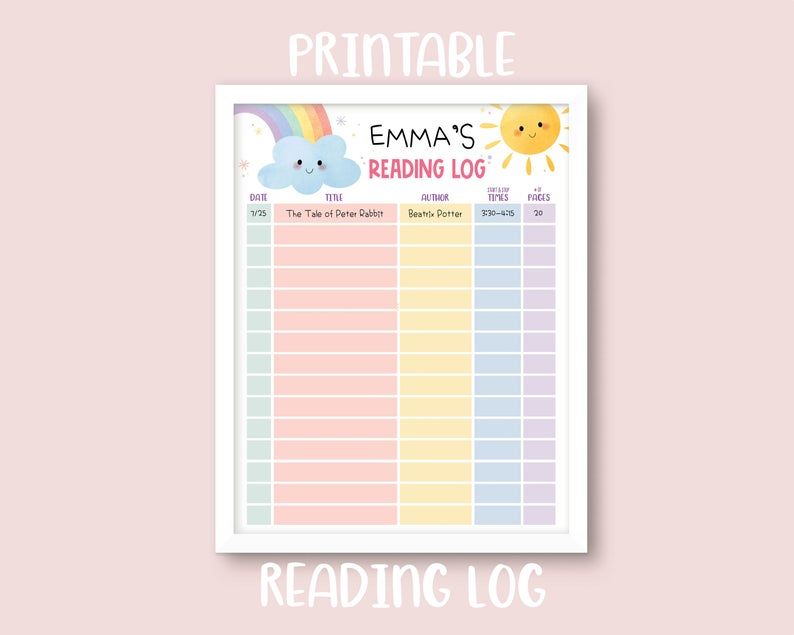
You can personalize and print this rainbow reading log for just $2.00.
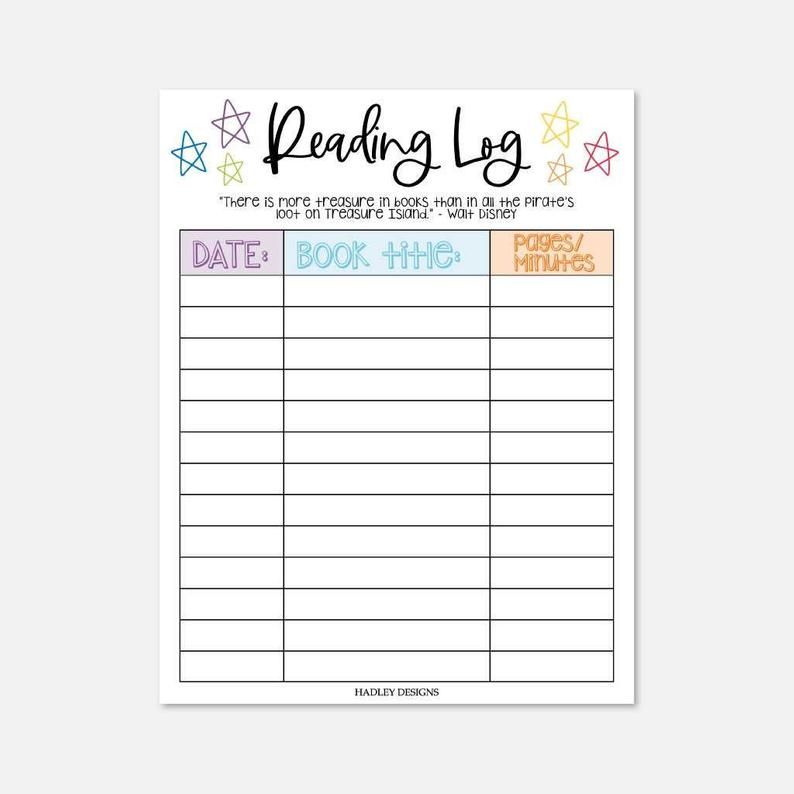
This reading log is entirely customizable for $4.99.
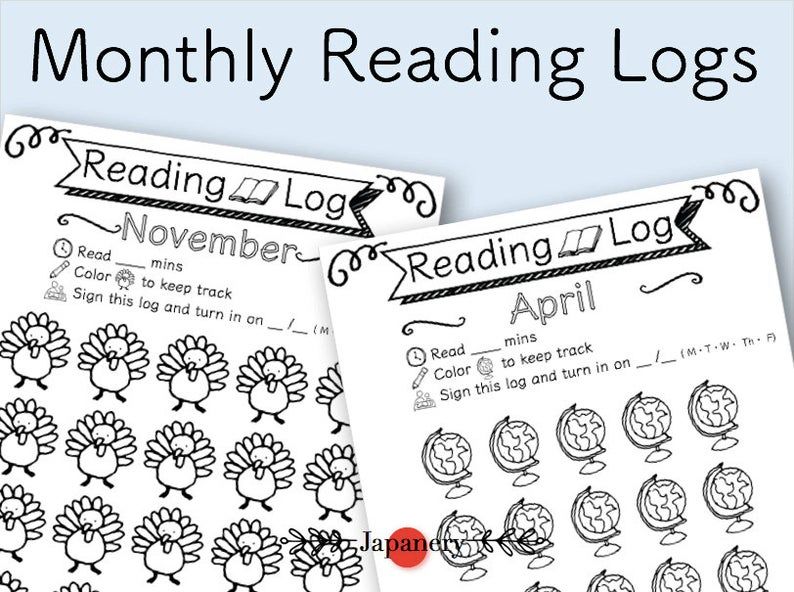
For younger children, this pack of printable reading logs allows them to color a themed sheet to keep track of their reading goals.
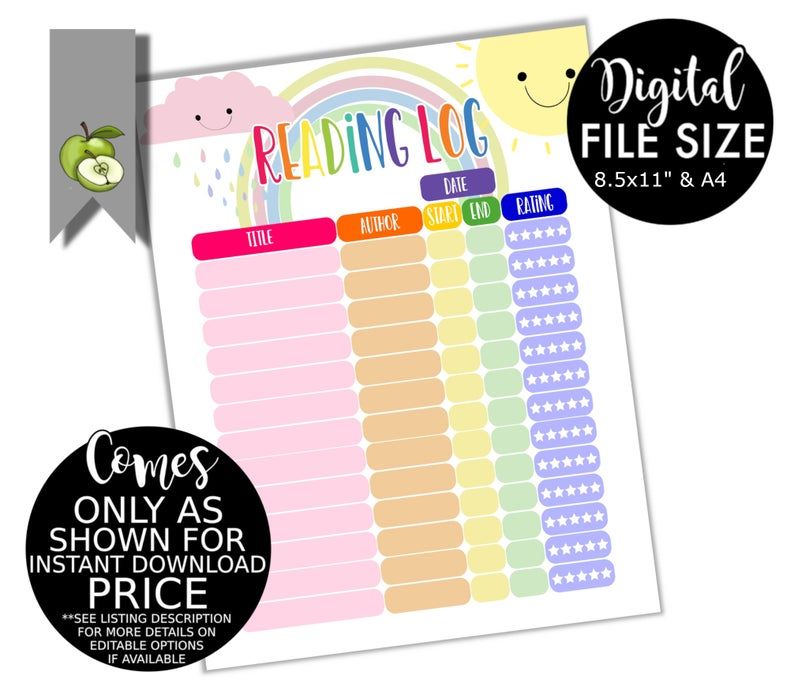
This log includes a 5-star rating system for only $1.43!
Reading Journals for Kids
Perhaps you want your children to keep track of their reading in a more comprehensive manner and over an extended time frame. Consider these reading journals to encourage kids to read AND write.
Reading Log: Gifts for Young Book Lovers by smART bookx
This journal includes 100 wide-ruled pages of the book log template. Kids track titles, dates read, and genres. Additionally, there are book review pages, a list of suggested books, and even a customizable table of contents.
My Very Own Book Journal: A Reading Log for Kids (And Grownups) Who Love Books by ooh lovely
This adorable journal allows kids to track their reading, as well as rate the books and write (or draw) reviews. The reviews are more comprehensive than most, allowing kids to include their favorite lines and who they’d recommend the book to, among other things. It also includes places to draw favorite characters and a even a place to write about their “desert island books.”
Bookworm Journal: A Reading Log for Kids (and Their Parents) by Potter Gifts
This log is more geared toward younger children. The log is simple including title, author, and rating of the books. To add a bit of fun, children get to tear perforated edges of pages as they log books. In this way, they watch the bookworm eat its way through the journal.
Reading Log for Kids: Reading Notebook For Ages 7-12 by Belle Books
This journal has all the elements of the reading log you could want: title, author, pages read, time spent reading, genre, and reviews. There are also coloring options and more detailed prompts to keep kids engaged.
My Daily Reading Log: A Journal for Kids to Record Daily Reading Time by Be Simple Be Happy Publishing
This journal is perhaps the simplest of all. It includes space to write what their reading and to keep track of the minutes spent reading. Though it’s not very exciting, it is fairly cute and under $5. The publisher has two other similar journals separated as “for girls” and “for boys,” but they’re entirely the same aside from the covers. (If you’re not sure if a journal is for your child’s gender, consider this handy guide.)
Source : Reading Logs for Kids (And More Easy Ideas to Support Kids’ Literacy)
